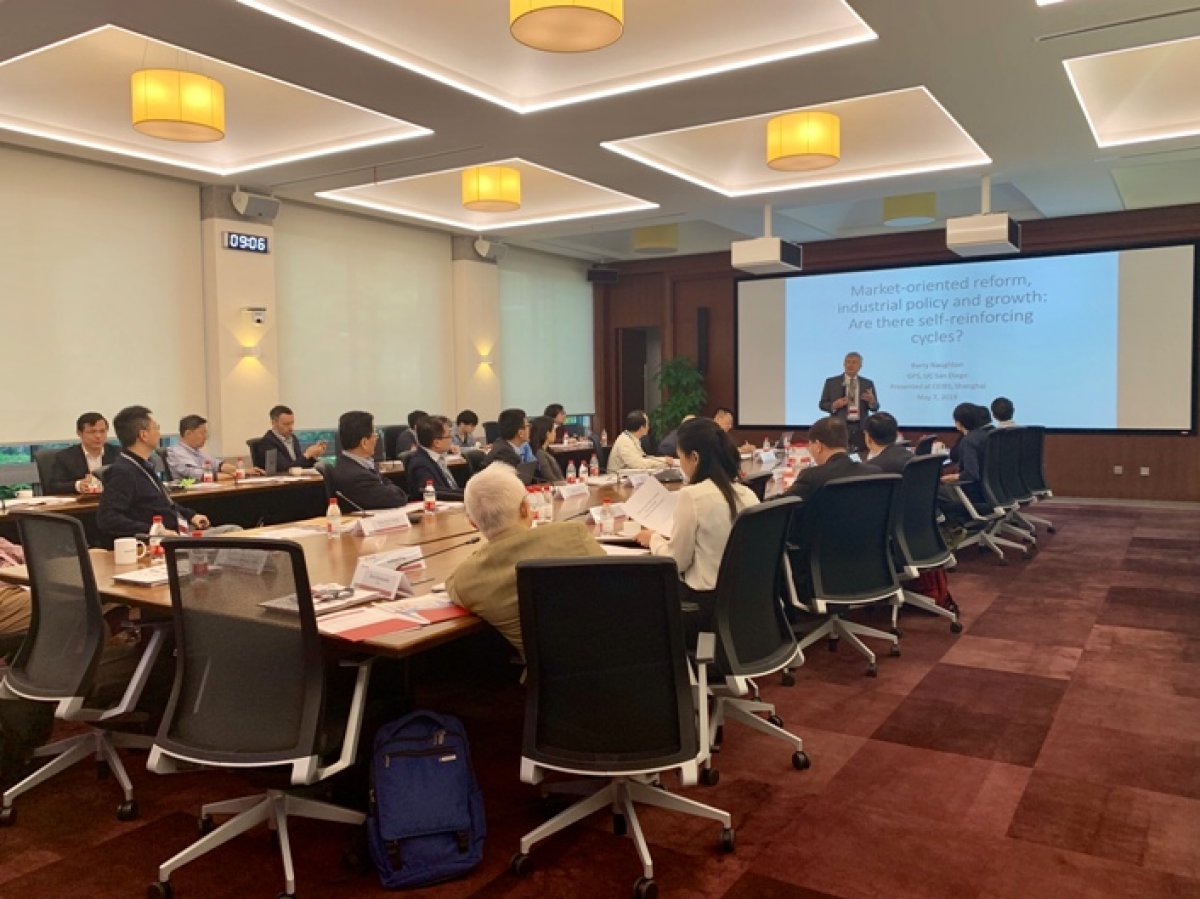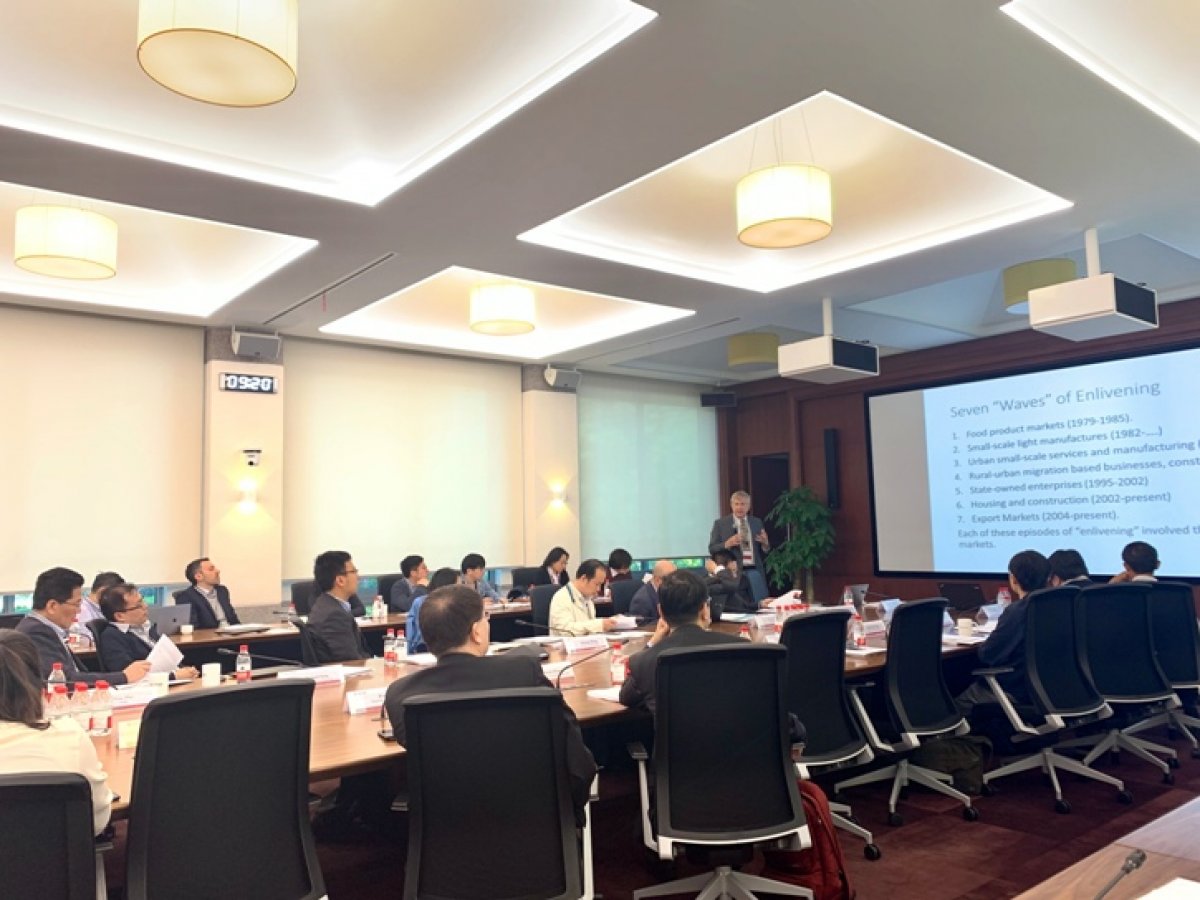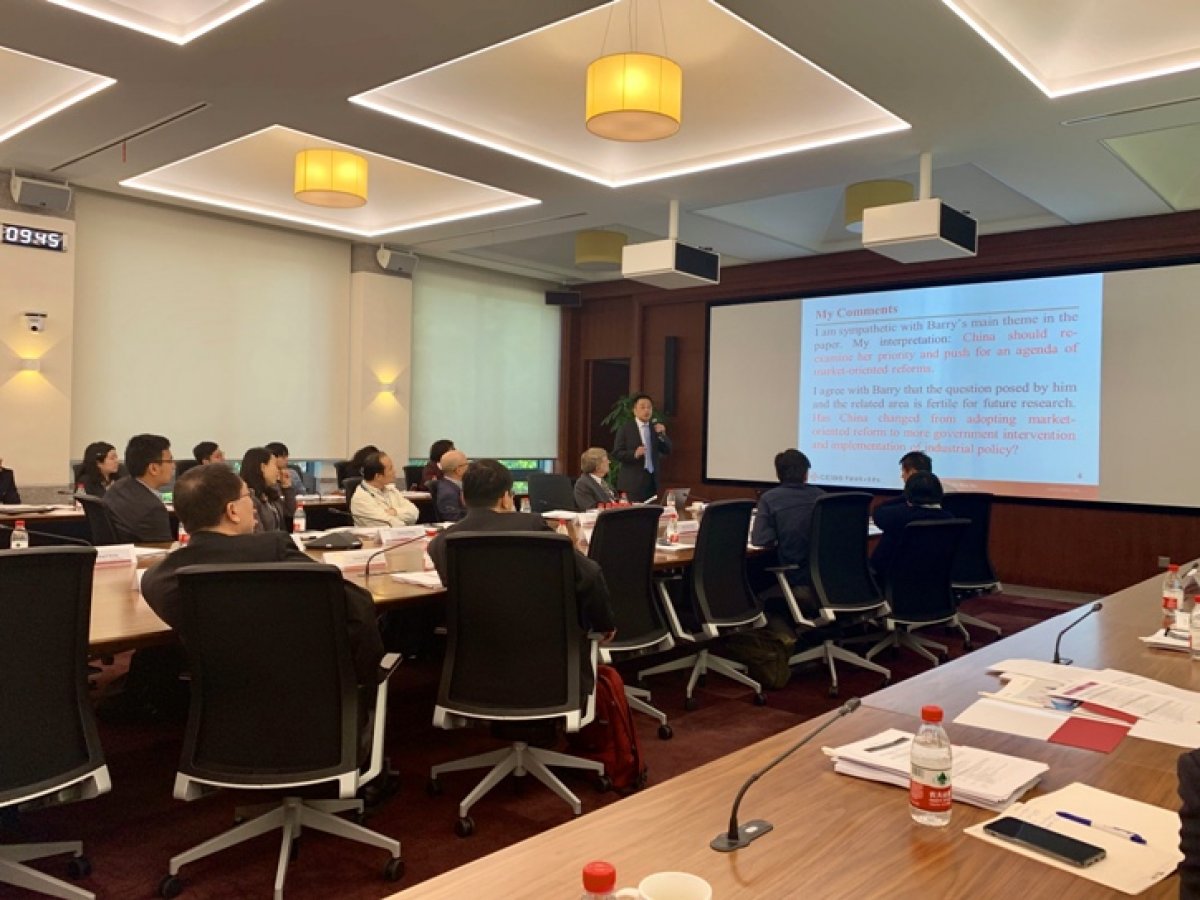The 2019 CEIBS Economics Symposium Held
May 7, 2019. Shanghai – The 2019 CEIBS Economics Symposium was hosted at CEIBS Shanghai Campus today, bringing together around 40 scholars from the US and Asia to present research on the topic of China’s economic transition.
Organised by CEIBS’ Department of Economics/Decision Sciences, the symposium aims to build a platform through which economics scholars from around the globe can share their latest research findings and exchange ideas. It also provides an opportunity to showcase CEIBS to the academic community worldwide. Fourteen speakers and discussants from renowned business schools in the US and Asia presented during the event.
As CEIBS Vice President and Dean Professor Ding Yuan explained in his opening address, the full-day symposium is the latest in a series of seminars hosted by the school’s five academic departments. He also noted how the symposium is in line with the school’s expertise in providing knowledge grounded in “China Depth, Global Breadth” by having distinguished scholars from around the globe discuss challenging research issues that are of global importance and also relevant to China.
The day-long symposium was divided into three sessions, including seven talks, including a 45- minute presentation and 15-minute discussion and Q&A session for each. The following are excerpts from speeches given during the symposium:
- Market-oriented Reform, Industrial Policy, and Growth
Presenter: Barry Naughton (University of California San Diego)
Our work examines three broad features of the Chinese economy, which we label “macro features,” for short. These features correspond to the familiar economist’s distinction between economic structure, economic system, and economic policy, but put in a dynamic context. The paper makes the simple point that there seems to be a self-reinforcing cycle that links these macro features. The three macro features were self-reinforcing and drove a multi-decade period of extraordinary economic success. More recently, and especially since 2010, the relationship between these three macro features has shifted in fundamental ways. Each of them has changed, and the relationship among them has changed as well. However, it still seems possible that the three macro features interact in a way that is self-reinforcing. This presents the danger of a type of policy “trap” in the economy. However, the trap is not inevitable. If policy-makers understand its workings and the associated risks, they can break out of this self-reinforcing cycle.
- Dual Market Competition: The Political Economy of China's Growth
Presenter: Li-An Zhou (Peking University)
China has achieved high, sustained economic growth in the past decades. In recent years, China has also made impressive progress in technological upgrading and innovations. The rise of China doesn’t follow a typical path known to economists. Our paper discusses several relevant issues, such as dual challenges for economic development, political tournaments among local leaders, regional variations of dual-market model and globalisation and dual-market competition. Also, we emphasise that China’s dual-market model highlights the joint importance of incentives, constraints, and feedback in sustaining effective government-business cooperation and economic growth.
- Setting the Price Right: Evidence from the Heating Price Reform in China
Presenter: Shuang Zhang (New York University Shanghai)
Inefficient energy pricing and a lack of incentives to conserve energy are common problems in developing countries and result in substantial allocative inefficiencies. This paper evaluates a recent major reform in the residential heating system in China that replaced a non-metered fixed payment system with a two-part tariff, called consumption-based billing. We developed an event-study research design that exploits quasi-experimental variation in the staggered rollouts of the reform over ten years. Using household-level daily heating usage data before and after the reform, we found that the reform induced substantial reduction in heating usage, by 37 percent reduction in four years. We also found evidence of learning. Households reduced heating usage gradually over time, with larger reduction in warmer days (i.e. days when the value of heating was relatively low) in later years. The author then uses plant-level emission data to examine environmental benefits of the reform. The reduced heating usage was associated with 40 percent reduction in SO2 emission concentration, 26 percent in NOx concentration and 18 percent in Particulate Matter concentration. We then used these results to calculate the reduction in deadweight loss that was produced by the policy. The findings provide important implications for energy policy because a growing number of developing countries are in the process of implementing consumption-based energy billing in lieu of pre-existing inefficient fixed-charge billing.
- Stationary Bandits, State Capacity, and the Malthusian Transition: The Lasting Impact of the Taiping Rebellion
Presenter: Colin Xu (World Bank)
The Taiping Rebellion (1851-1864) in China was the deadliest civil war in history. Our work provides evidence that this cataclysmic event significantly shaped the Malthusian transition and long-term development that followed, especially in areas where the experiences that stemmed from the rebellion led to better property rights, stronger local fiscal capacity, and rule by leaders with longer-term governance horizons. More than one-and-a-half centuries after the rebellion’s end, population increases from pre-war levels remain 38 percent to 67 percent lower in areas that were affected by the rebellion than in those that were unaffected. Moreover, areas that were affected by the rebellion have, on average, greater fiscal capacity and modern economic sectors to the present day. Two channels for the effects of the rebellion are: stationary banditry (manifested by varying property rights and the rebellion area’s proximity to the Taiping capital), and the wartime strengthening of fiscal capacity. This analysis shows evidence of complementarity between wartime state capacity and local institutions, and of the long-term benefits of fiscal decentralisation in a large country. Furthermore, initial human capital is strongly associated with long-term development.
- Artificial Administrative Boundaries: Evidence from China
Presenter: Tuan-Hwee Sng (National University of Singapore)
What happens when subnational boundaries are badly drawn? This paper uses China as a test case to investigate the ramifications. As Chinese provincial and long-standing socioeconomic boundaries are not fully aligned, counties of the same province may not share the same regional identity. Using Deng Xiaoping's economic decentralisation campaign in 1991-92 to implement a difference-in-differences design, we found that the growth paths of aligned and misaligned counties diverged after Deng's campaign galvanized the provinces to pursue faster growth. We also found evidence of discrimination against the misaligned counties by the provincial authorities. Our findings shed new light on the economic consequences of administrative boundaries; they also contribute to the debate on whether decentralisation enhances or reduces welfare by highlighting an efficiency-equity trade-off when boundaries are misaligned.
- A Model of Business Cycle in the Spirit of the Austrian School
Presenter: Xiaonian Xu (CEIBS) /Jiarui Zhang (UNNC)
Our paper models vertical specialisation of labour and capital in an otherwise standard general equilibrium business cycle framework. It captures Bohm-Bawerk’s roundabout production and studies how monetary policy causes artificial boom and how the market process brings it to an end. By endogenizing the production structure and degree of vertical specialisation, our model extends the Austrian School’s business cycle theory represented by Hayekian Triangle. Monetary expansion reduces nominal interest rate, which extends the roundabout production process and motivate demand, causing artificial boom. However, capital and labour are mis-directed to upstream industries, conflicting with original preferences and natural rate of interest. The market process then leads to the increase of nominal interest rate and brings the artificial boom into stagflation.
- A Forensic Examination of China’s National Accounts
Presenter: Michael Song (Chinese University of Hong Kong)
China’s national accounts are based on data collected by local governments. However, since local governments are rewarded for meeting growth and investment targets, they have an incentive to skew local statistics. China’s National Bureau of Statistics (NBS) adjusts the data provided by local governments to calculate GDP at the national level. The adjustments made by the NBS average 5% of GDP since the mid-2000s. On the production side, the discrepancy between local and aggregate GDP is entirely driven by the gap between local and national estimates of industrial output. On the expenditure side, the gap is in investment. Local statistics increasingly misrepresent the true numbers after 2008, but there was no corresponding change in the adjustment made by the NBS. Using publicly available data, we provide revised estimates of local and national GDP by re-estimating output of industrial, construction, wholesale and retail firms using data on value-added taxes. We also uses several local economic indicators that are less likely to be manipulated by local governments to estimate local and aggregate GDP. The estimates also suggest that the adjustments by the NBS were insufficient after 2008. Relative to the official numbers, we have estimated that GDP growth from 2010-2016 is 1.8 percentage points lower and the investment and savings rate in 2016 is 7 percentage points lower.



















